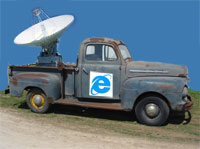 Trying to work out the law surrounding this Wi-Fi malarkey seems to be a tricky business.
Trying to work out the law surrounding this Wi-Fi malarkey seems to be a tricky business.
As we reported earlier, it seems that walking around residential streets looking for a Wi-Fi connection is definitely A Very Bad Thing and liable to land you with a trouble.
But if you’re Microsoft, then you’re apparently free to dispatch cars all over US towns and suburbs to trawl for the signals sent out by the millions of short-range home and office WiFi networks.
Microsoft’s somewhat unexpected move – soon to be repeated in the UK and elsewhere – is part of a plan to create a ground-based location system as an alternative to the GPS satellite system.
 According to an article in the Financial Times, Microsoft says it has now built a database containing the whereabouts of “millions” of WiFi networks.
According to an article in the Financial Times, Microsoft says it has now built a database containing the whereabouts of “millions” of WiFi networks.
Naturally, privacy groups are more than a little concerned about Microsoft sniffing about the hedgerows and alcoves of private networks, but the company claims that it has collected only the unique identifier (MAC address) of each Wi-Fi network and that this cannot be traced to an address or an individual user.
Microsoft says that by recording the position of every MAC address on a giant map, it had created a positioning system that would make it possible for anyone with a WiFi-enabled laptop to flip out their machine and identify their location to within 30.5 metres.
We think location-based information and services are going to be huge and an alternative way of locating yourself without the need for GPS is welcome.
Where this WiFi-based locating will work particularly well is in cities where GPS doesn’t work too well, due to its signal being blocked by the tall buildings, and there a strong concentration of WiFi connections.
 Microsoft has launched the first public beta of its Virtual Earth, an online mapping application overlaying satellite images with local searches and maps.
Microsoft has launched the first public beta of its Virtual Earth, an online mapping application overlaying satellite images with local searches and maps. 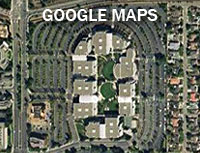 Virtual Earth will also have the capability to visually point out locations for ATMs, restaurants, and petrol stations – something that the rival Google Maps service has been able to do since incorporating satellite imagery in April this year.
Virtual Earth will also have the capability to visually point out locations for ATMs, restaurants, and petrol stations – something that the rival Google Maps service has been able to do since incorporating satellite imagery in April this year. 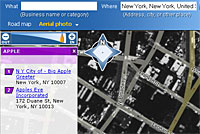 Mac users, however, will have to wait until autumn for a version that runs on their machines.
Mac users, however, will have to wait until autumn for a version that runs on their machines.  Wags on the Internet are claiming that Microsoft has virtually wiped Apple off the face of the Web, noting that Apple’s Silicon Valley headquarters – which can be seen in their full glory on Google Maps – appears as nothing more than a deserted parking lot in Virtual Earth.
Wags on the Internet are claiming that Microsoft has virtually wiped Apple off the face of the Web, noting that Apple’s Silicon Valley headquarters – which can be seen in their full glory on Google Maps – appears as nothing more than a deserted parking lot in Virtual Earth. 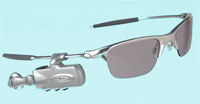 Put two cool branded products together – Motorola mobiles and Oakley sunglasses – and what do you get?
Put two cool branded products together – Motorola mobiles and Oakley sunglasses – and what do you get?  The Bluetooth box clamps on to one of the arms of the sunglasses and sports volume controls and an answer button on its lower edge.
The Bluetooth box clamps on to one of the arms of the sunglasses and sports volume controls and an answer button on its lower edge.  Billed as the “thinnest, lightest, coolest QWERTY on the Planet”, the new Q phone from Motorola has set a few hearts pounding in Chez Digi-Lifestyles.
Billed as the “thinnest, lightest, coolest QWERTY on the Planet”, the new Q phone from Motorola has set a few hearts pounding in Chez Digi-Lifestyles. 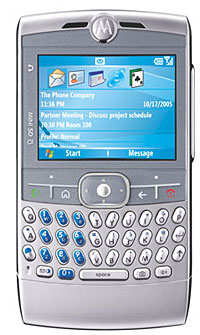 There’s a Mini-SD slot provided for extra storage and connectivity is taken care of via Bluetooth, IrDA and mini-USB.
There’s a Mini-SD slot provided for extra storage and connectivity is taken care of via Bluetooth, IrDA and mini-USB. 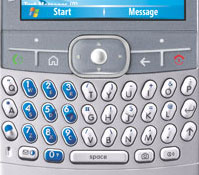 “With the Moto Q, we’ve combined the best voice, data and design technology in one ultra-thin, intelligent, hard-working, and incredibly must-have device. Today’s office space has the potential to be any place you want it to be with Q.”
“With the Moto Q, we’ve combined the best voice, data and design technology in one ultra-thin, intelligent, hard-working, and incredibly must-have device. Today’s office space has the potential to be any place you want it to be with Q.”  The Moto Q is expected to be available in Q1 2006.
The Moto Q is expected to be available in Q1 2006. Sony Whips Out A White PSP
Sony Whips Out A White PSP 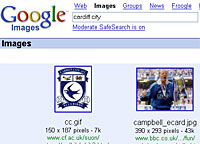 Google Grabs 47% Of All Searches Online
Google Grabs 47% Of All Searches Online  London’s Ravensbourne College is launching a new program called the School of Computing for the Creative Industries.
London’s Ravensbourne College is launching a new program called the School of Computing for the Creative Industries.  We would have thought that most of the passion manifests itself in the student bar, but the School insists that the new creative “understands that s/he is defined by the impact and credibility of their online presence.”
We would have thought that most of the passion manifests itself in the student bar, but the School insists that the new creative “understands that s/he is defined by the impact and credibility of their online presence.”  All the technical facilities in the School will be built on open source platforms, with support offered to students wishing to release projects under free and open source licenses.
All the technical facilities in the School will be built on open source platforms, with support offered to students wishing to release projects under free and open source licenses.  Punters are being invited to get all interactive with the BBC’s TV and radio schedules as part of their Backstage experiment. The call to action was trumpted at the London hosted Open Tech grass roots conference that ran at the weekend.
Punters are being invited to get all interactive with the BBC’s TV and radio schedules as part of their Backstage experiment. The call to action was trumpted at the London hosted Open Tech grass roots conference that ran at the weekend.  The BBC has already received more than 50 prototype ideas for using BBC feeds and content for non-commercial purposes since the project’s launch in May.
The BBC has already received more than 50 prototype ideas for using BBC feeds and content for non-commercial purposes since the project’s launch in May.  A British court has fined a man £500 ($870, €720) for using a residential wireless broadband connection without permission.
A British court has fined a man £500 ($870, €720) for using a residential wireless broadband connection without permission. 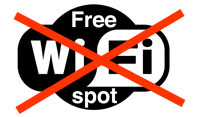 We have to say this seems a little harsh as there appears to be no evidence that there was any hostile motive behind his actions.
We have to say this seems a little harsh as there appears to be no evidence that there was any hostile motive behind his actions.  Champagne corks were firing off at Google like a military salute as the Internet search engine kings revealed that their profits had jumped more than 300 per cent in the second quarter this year.
Champagne corks were firing off at Google like a military salute as the Internet search engine kings revealed that their profits had jumped more than 300 per cent in the second quarter this year.  The company’s fortunes are currently on a stratospheric trajectory, with April’s first-quarter profit almost six times higher than a year earlier.
The company’s fortunes are currently on a stratospheric trajectory, with April’s first-quarter profit almost six times higher than a year earlier.  What with the summer in full swing, and the weather in the good old UK being as warm as it has been, I have observed some serious heat issues while using my Mac Mini.
What with the summer in full swing, and the weather in the good old UK being as warm as it has been, I have observed some serious heat issues while using my Mac Mini. At first, I had put it down to my Mac simply not running as well as it used to for whatever reason, but today it’s been considerably cooler because it’s rained, and all of a sudden my Mac Mini is running perfectly again.
At first, I had put it down to my Mac simply not running as well as it used to for whatever reason, but today it’s been considerably cooler because it’s rained, and all of a sudden my Mac Mini is running perfectly again.